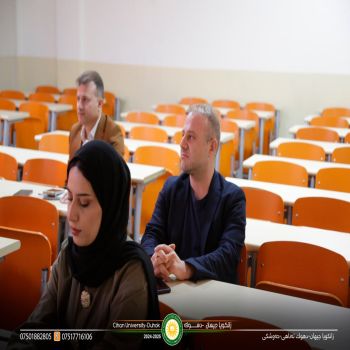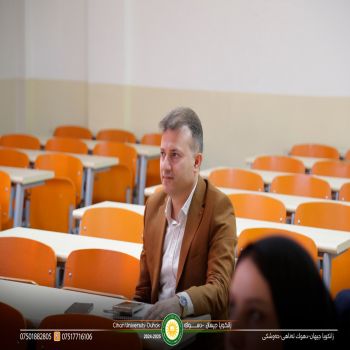A Symposium entitled: Cystic Fibrosis

on (May 27, 2025) in the presence of the head of departments and lecturer a symposium entitled (wounds and its healing), was presented by (Mr. Diler Gabrael Saadi) from the Radiology department , Where it has been explained about, Cystic Fibrosis (CF) is a life-limiting autosomal recessive genetic disorder caused by mutations in the CFTR (Cystic Fibrosis Transmembrane Conductance Regulator) gene, which affects chloride ion transport across epithelial cells. This defect leads to the production of thick, sticky mucus that primarily impairs the respiratory and digestive systems. Common clinical manifestations include chronic lung infections, pancreatic insufficiency, and reduced life expectancy. The most prevalent mutation, ΔF508, disrupts protein folding and function. Early diagnosis through newborn screening and genetic testing has significantly improved patient outcomes. Current treatment strategies involve airway clearance techniques, antibiotics, pancreatic enzyme replacement, and CFTR modulators such as ivacaftor and lumacaftor. Advances in molecular medicine, particularly gene therapy and CRISPR-based approaches, offer promising prospects for more effective and potentially curative treatments. This seminar aims to provide a brief yet comprehensive overview of the genetic basis, pathophysiology, clinical features, and modern management of Cystic Fibrosis, highlighting its significance as a model for understanding genetic diseases and personalized medicine., At the end of the symposium Cystic Fibrosis is more than just a genetic disorder—it is a clear example of how advances in molecular biology and genetics can transform the way we understand, diagnose, and treat disease. Through the identification of the CFTR gene and the development of targeted therapies, CF has become one of the most well-studied inherited conditions. Continued research holds promise for curative treatments, including gene therapy and genome editing. By studying CF, we gain not only insight into a single disease but also valuable lessons in the power of genetics and the future of personalized medicine.









